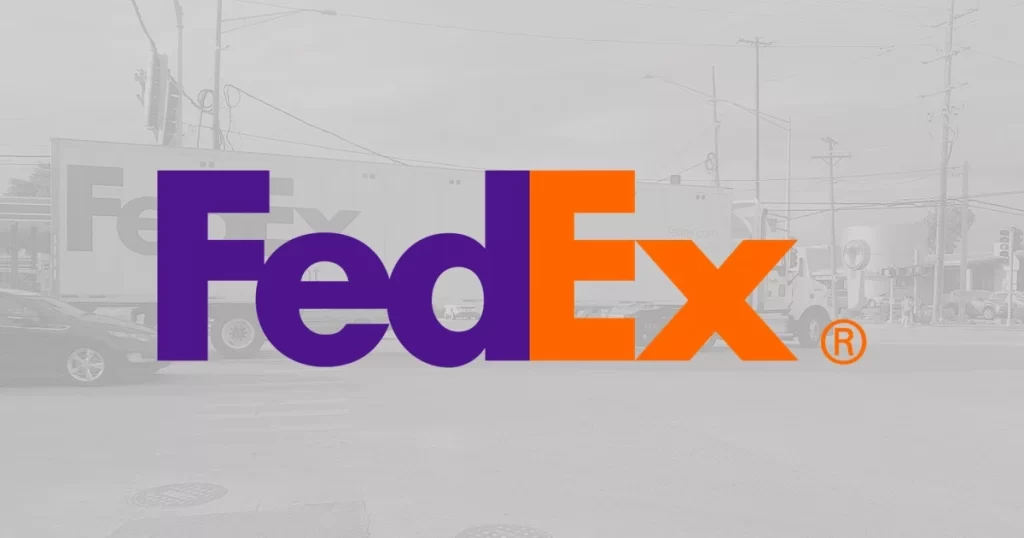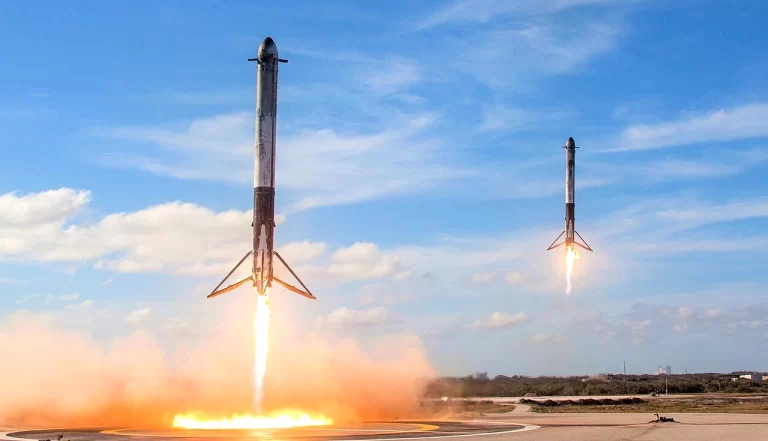From a scrappy startup with a radical idea to an industry-defining logistics powerhouse, the Growth Story of FedEx is one of innovation, scale, and precision. In a sector where speed and trust matter most, FedEx has continually reimagined what’s possible in logistics.
This case study explores how FedEx in logistics transformed the company into a global leader—highlighting strategic decisions, tech innovation, and measurable business outcomes.
The Beginning: A Revolutionary Idea
The roots of FedEx began in 1965 when Frederick W. Smith, then a Yale undergraduate, proposed a new system for delivering urgent packages swiftly and reliably—an idea that would go on to reshape the logistics industry. In 1971, Smith founded Federal Express Corporation, launching operations in 1973 with 14 small aircraft and 389 employees. On its first night, the company delivered 186 packages to 25 U.S. cities, introducing the world to overnight express shipping.
Strategically headquartered in Memphis, Tennessee, FedEx built its operations around a hub-and-spoke model that centralized sorting and enabled faster delivery across regions. This model, combined with the integration of air and ground transportation and real-time tracking systems, created a logistics blueprint still in use today. Over time, Federal Express—renamed FedEx in 1994—grew from a radical idea into a global force, credited with setting the foundation for modern express delivery.
FedEx in Logistics: Building a Global Machine
Over the decades, FedEx has evolved from a pioneering overnight delivery service into one of the most sophisticated and expansive logistics networks in the world. Its growth has been driven not only by scale but by the ability to adapt to shifting global demands, leverage advanced technologies, and offer end-to-end logistics services across industries and geographies.
Today, FedEx in logistics is defined by its ability to seamlessly connect businesses and consumers through an integrated global network. It serves as a vital backbone for industries like retail, healthcare, aerospace, e-commerce, and manufacturing—where timely and traceable delivery is mission-critical.
Key components of FedEx’s logistics ecosystem include:
- FedEx Express: Time-definite delivery for urgent and international shipments, covering over 220 countries and territories.
- FedEx Ground: Cost-effective, day-definite delivery services across North America with a focus on e-commerce scalability.
- FedEx Freight: LTL (less-than-truckload) freight services supporting bulky and heavy shipments.
- FedEx Logistics: End-to-end supply chain services including warehousing, customs brokerage, and reverse logistics.
- FedEx Office: On-site printing, packaging, and shipment drop-off locations, offering local access to global logistics.
This interconnected model ensures that FedEx can serve clients of all sizes—from a local startup shipping within the U.S. to a multinational corporation distributing across global markets.
What makes FedEx unique is not just its breadth of services but the precision with which it executes them. The company operates:
- More than 650 aircraft, making it one of the largest cargo airlines globally.
- A fleet of over 200,000 motorized vehicles.
- 5,000+ operational facilities worldwide.
- A network that moves more than 15 million packages per day.
Beyond just transporting goods, FedEx also helps businesses manage complex logistics operations—from sourcing and inventory to fulfillment and reverse logistics. With the rise of online shopping and global supply chains, FedEx has positioned itself as a trusted logistics partner for companies navigating high-volume, high-stakes delivery demands.
This expansive infrastructure, combined with its technological backbone and global reach, makes FedEx a truly global logistics machine—one that doesn’t just deliver packages, but powers global commerce.
Growth Through Strategic Acquisitions
One of the key pillars of FedEx’s global expansion has been its well-timed and strategic acquisitions. Rather than simply relying on organic growth, FedEx has consistently identified opportunities to enhance its logistics capabilities, broaden geographic reach, and strengthen its service portfolio through mergers and acquisitions.
These acquisitions weren’t just about increasing size—they were targeted to fill critical gaps, from ground delivery and retail access to freight forwarding and e-commerce logistics. Each move helped FedEx evolve from a focused express delivery firm into a multi-dimensional logistics provider.
Notable acquisitions that shaped FedEx’s growth include:
- Caliber System Inc. (1998)
This acquisition brought FedEx into the ground delivery market by integrating Caliber’s subsidiaries like RPS (Roadway Package System). It marked the start of FedEx’s shift from an express-only model to a more comprehensive logistics offering. - Kinko’s (2004)
Acquiring this retail print and shipping chain allowed FedEx to expand customer access points across the U.S. and beyond. Later rebranded as FedEx Office, these locations became essential for printing, packaging, and shipping services in local markets. - GENCO (2015)
A leader in reverse logistics and third-party fulfillment, GENCO added a new dimension to FedEx’s services. This acquisition was especially valuable in the e-commerce era, where returns management and omnichannel fulfillment are crucial for retailers. - TNT Express (2016)
This €4.4 billion acquisition significantly expanded FedEx’s presence in Europe. With TNT’s strong road network and established customer base, FedEx gained a competitive edge in intra-European deliveries and cross-border e-commerce. - ShopRunner (2020)
ShopRunner connected FedEx directly with online shoppers and e-commerce retailers, offering faster delivery and improved customer experience for online purchases.
Each acquisition fed into a broader strategy—one focused on service integration, geographic coverage, and adapting to new market demands, particularly those driven by digital commerce and global trade.
As a result, FedEx today operates not as a collection of individual services, but as a tightly integrated logistics platform. This platform is capable of handling everything from the first mile to the last, whether it’s a single parcel or a high-volume supply chain operation spanning multiple continents.
Technology and Innovation: Staying Ahead of the Curve
In the logistics industry, technology isn’t just a support function—it’s the core engine driving speed, efficiency, and customer satisfaction. For FedEx, innovation has always been a competitive differentiator. From real-time tracking systems to AI-driven logistics, FedEx continues to lead the industry by integrating technology at every level of its operations.
What sets FedEx apart is its proactive investment in next-generation tools that not only optimize its global logistics network but also reshape customer expectations around delivery. Whether it’s predictive analytics for risk mitigation or robotics for warehouse automation, FedEx is designing a smarter, more responsive logistics ecosystem.
Key innovations and technologies shaping FedEx’s logistics leadership include:
- FedEx Surround
An AI-powered platform that delivers real-time visibility into package movement. It enables customers to monitor high-value or time-sensitive shipments and proactively address risks such as weather disruptions or customs delays. - Advanced Route Optimization
Using big data and machine learning, FedEx optimizes delivery routes based on real-time traffic, package volume, and environmental factors—reducing fuel consumption and improving delivery time accuracy. - Robotics and Automation
In its sorting facilities and warehouses, FedEx has introduced robotic arms, autonomous mobile robots (AMRs), and high-speed sorters. These systems boost speed and reduce human error, especially during peak seasons. - Blockchain Integration
FedEx is among the early adopters of blockchain for secure shipment documentation and verification. This is particularly useful in international trade and high-value shipments where transparency and security are crucial. - Electric Delivery Vehicles and Sustainability Tech
With a pledge to achieve carbon-neutral operations by 2040, FedEx is investing in electric vehicle fleets, alternative fuels, and energy-efficient facility designs. These changes align environmental responsibility with operational efficiency. - Sensor-Based Logistics
Smart sensors embedded in packages allow for real-time temperature, location, and humidity monitoring—critical for sectors like healthcare and pharmaceuticals.
These innovations aren’t siloed—they’re part of an integrated digital strategy that enhances FedEx’s responsiveness, lowers costs, and elevates customer trust. Whether it’s enabling a small e-commerce seller to ship globally or helping a hospital transport temperature-sensitive vaccines, FedEx’s tech-first approach ensures reliability and scale.
By continuously experimenting, partnering with tech startups, and upgrading its digital core, FedEx stays well ahead of the curve—turning logistics into a high-performance, tech-driven business solution.
Logistics Without Borders: FedEx’s Localized Global Strategy
As FedEx expanded its footprint across continents, it quickly realized that success in logistics isn’t just about scale—it’s about adaptability. Operating in more than 220 countries and territories, FedEx has mastered the art of tailoring its services to meet the specific economic, regulatory, and infrastructural nuances of each region. This localized global approach is a cornerstone of its growth strategy and a key reason why FedEx is trusted by businesses of all sizes around the world.
Unlike many logistics companies that apply a one-size-fits-all model, FedEx builds customized regional strategies to reflect market maturity, customer needs, and cultural preferences. Whether it’s optimizing last-mile delivery in crowded urban centers or simplifying customs clearance in emerging economies, FedEx adapts its operations to meet regional realities without compromising on global standards.
How FedEx localizes its logistics model across regions:
- Customized Delivery Infrastructure
In dense metro areas, FedEx deploys electric bikes, smaller vans, or even pedestrian couriers to navigate traffic and environmental regulations. In rural and remote areas, it builds strategic partnerships with local logistics players to ensure reach. - Tailored Service Offerings
FedEx introduces unique service bundles based on local demand—such as cash-on-delivery in regions with low credit card penetration or flexible pickup/drop-off points in areas where home delivery is challenging. - Localized Warehousing and Fulfillment
The company strategically places fulfillment centers near major consumer hubs to reduce delivery times and optimize inventory distribution for regional e-commerce and retail clients. - Regulatory and Customs Expertise
FedEx employs local experts to help businesses navigate country-specific import/export rules, taxes, and compliance frameworks—reducing customs delays and increasing shipment reliability. - Language and Customer Support
Customer service is offered in multiple languages, with dedicated regional support teams who understand cultural nuances and service expectations. - Small Business Enablement
In growing markets, FedEx offers logistics onboarding and incentives for SMEs to reach international customers, acting as a gateway for local businesses to participate in global trade.
This emphasis on regional adaptability doesn’t just serve operational needs—it builds trust. Customers around the world rely on FedEx not just to deliver packages, but to deliver them in a way that works best in their environment.
By embedding flexibility into its global systems and listening closely to the needs of each market, FedEx has created a logistics network that feels both massive and deeply local—a rare balance that few competitors have managed to achieve.
Performance Over the Years: Key Metrics
FedEx’s growth trajectory reflects its transformation from a regional express delivery service into a global logistics powerhouse. Over the decades, it has steadily expanded its revenue, workforce, and operational capacity—driven by innovation, acquisitions, and rising global demand.
Key performance indicators show:
- Revenue growth from $18.3 billion in 2000 to over $90 billion by 2023
- Daily package volume increased fivefold, now averaging 15 million+ shipments per day
- Global workforce expanded to over 530,000 employees, supporting operations in 220+ countries
This upward trend demonstrates not just scale, but resilience—especially during global crises like the COVID-19 pandemic, when FedEx played a crucial role in critical medical and vaccine distribution.
FedEx Financial Performance (FY2020–FY2024)
Over the past five fiscal years, FedEx has demonstrated resilience and adaptability amid global challenges. The company’s revenue grew from $69.2 billion in FY2020 to a peak of $93.5 billion in FY2022, before stabilizing around $87.7 billion in FY2024. Net income saw a significant rise in FY2021, reflecting operational efficiencies and increased demand, and remained robust through FY2024. The workforce expanded notably in FY2022, aligning with the surge in e-commerce and global logistics needs, and adjusted in subsequent years to optimize operations.
Competitive Landscape: How FedEx Stacks Up
The global logistics market is fast-paced, fiercely competitive, and constantly evolving. FedEx is one of the industry’s most recognizable and respected names—but it doesn’t operate in isolation. It competes directly with other global giants like UPS, DHL, and increasingly, Amazon Logistics, each with their own strengths and specialized niches.
What sets FedEx apart is its consistent focus on innovation, global integration, and a diversified service offering across air, ground, freight, and supply chain management. While competitors excel in specific regions or segments, FedEx combines scale, service quality, and technology in a uniquely cohesive way.
Here’s how FedEx stacks up against key industry players:
| Feature/Category | FedEx | UPS | DHL | Amazon Logistics |
|---|---|---|---|---|
| Global Reach | 220+ countries and territories | 220+ countries and territories | Strong in Europe, Asia, Latin America | U.S.-centric with rapid global expansion |
| Delivery Speed | Leader in overnight & express delivery | Comparable in U.S., slower globally | Competitive in EU/Asia | Fast in metro areas, inconsistent elsewhere |
| E-commerce Fulfillment | Rapidly growing with strong partnerships | Established, scalable solutions | Advanced in EU; catching up elsewhere | Deep integration with Amazon platform |
| Technology Investment | Heavy focus on AI, robotics, blockchain | Strong in automation and analytics | High in green tech and process optimization | Leading in predictive logistics via data |
| Sustainability Initiatives | Carbon-neutral by 2040, EV fleet rollout | Net-zero emissions by 2050 | Industry leader in green logistics | Focused on packaging and last-mile carbon cut |
| B2B Solutions | Full-service logistics & supply chain | Strength in enterprise and industrial | Broad B2B services globally | Limited to Amazon sellers only |
FedEx holds a dominant position in express shipping and international parcel delivery, especially for time-sensitive shipments. Its main competitor in North America, UPS, offers similar speed but lags slightly in global coverage and innovation. DHL leads in sustainability and Europe-Asia corridors, while Amazon Logistics is disrupting the last-mile delivery space through deep integration with its retail ecosystem.
What gives FedEx an edge is its balanced portfolio—not overly reliant on one geography or customer type. Its investments in supply chain solutions, e-commerce partnerships, and green logistics prepare it well for both current demand and future disruptions.
In a landscape where customer expectations are higher than ever and speed is the new standard, FedEx continues to set benchmarks—not only as a logistics provider, but as a trusted global partner.
Outcomes: What FedEx’s Strategy Delivers
FedEx’s long-term investments in technology, network infrastructure, and strategic acquisitions have not only scaled its operations but have also produced tangible, high-impact outcomes. The company’s ability to deliver speed, reliability, and adaptability—at global scale—has made it a logistics partner of choice for enterprises, governments, and small businesses alike.
Unlike many legacy players, FedEx hasn’t just kept up with industry changes—it has anticipated and driven them. Its integrated approach to logistics has enabled consistent performance across metrics that matter most to its clients: delivery precision, service diversity, market reach, and innovation readiness.
Here are the key outcomes of FedEx’s logistics and business strategy:
- On-Time Delivery Rates Exceeding 99%
FedEx consistently delivers packages with near-perfect timing, especially in its Express and Priority service categories—an achievement critical for industries like healthcare, legal, and manufacturing. - Unmatched Global Reach
Operating in over 220 countries and territories, FedEx enables cross-border trade for businesses of all sizes. Its reach allows even small e-commerce brands to serve global markets with reliable fulfillment and returns. - Pandemic Response & Vaccine Delivery
During the COVID-19 crisis, FedEx played a frontline role in transporting PPE, medical supplies, and millions of vaccine doses, using temperature-controlled logistics and specialized tracking technologies. - E-commerce Enablement
Strategic partnerships with platforms like Shopify, Adobe Commerce, and BigCommerce have positioned FedEx as a key enabler of the booming e-commerce economy. The company also provides same-day and next-day services tailored to online sellers. - Sustainability Progress
FedEx has committed to carbon-neutral operations by 2040. It’s already deployed electric delivery vehicles in multiple cities and upgraded hubs to run on renewable energy, aligning with customer and regulatory sustainability goals. - High Customer Retention and Satisfaction
With flexible delivery options, transparent tracking, and world-class customer support, FedEx enjoys strong loyalty among both business and individual clients. Its Net Promoter Score (NPS) consistently ranks among the highest in the logistics industry. - Operational Synergy Across Business Units
FedEx’s ongoing integration of its Express, Ground, Freight, and Logistics divisions has reduced redundancies and created a smoother, more cost-effective supply chain experience for customers.
These results reflect more than operational excellence—they show how FedEx’s holistic strategy translates into real business value. Whether solving global supply chain challenges or enabling last-mile delivery in small towns, FedEx delivers not just packages, but impact.
Final Dispatch: What FedEx Teaches Us About Logistics Leadership
FedEx’s journey from a bold business plan in the 1970s to a global logistics powerhouse is more than just a story of packages and planes—it’s a masterclass in strategic execution, innovation, and adaptation. Over the decades, the company has continuously evolved in response to changing customer needs, technological advancements, and global trade dynamics.
What makes FedEx remarkable isn’t just its scale, but the way it integrates every moving part—air, ground, digital, and physical—into a seamless delivery machine that works across continents, industries, and time zones.
Key Takeaways from the FedEx Case Study:
- Vision is Everything: FedEx’s success began with a simple yet daring idea—guaranteed overnight delivery—that reshaped the logistics landscape.
- Innovation Drives Leadership: From tracking technology to AI, FedEx has consistently been ahead of the curve in applying tech to logistics.
- Global Mindset, Local Execution: FedEx’s ability to adapt its services to local market conditions is key to its international success.
- Strategic Acquisitions Accelerate Growth: Mergers with companies like TNT, GENCO, and Kinko’s gave FedEx instant capabilities it would have taken years to build.
- Data and Performance Matter: FedEx isn’t just moving boxes—it’s managing an ecosystem, and its operational metrics prove the effectiveness of its model.
- Sustainability is Now a Strategic Pillar: With aggressive targets for carbon neutrality, FedEx is showing how logistics can lead the way in responsible growth.
In an era where speed, scale, and flexibility are everything, FedEx continues to deliver—not just packages, but powerful lessons in how to lead, innovate, and thrive in a competitive global market.




